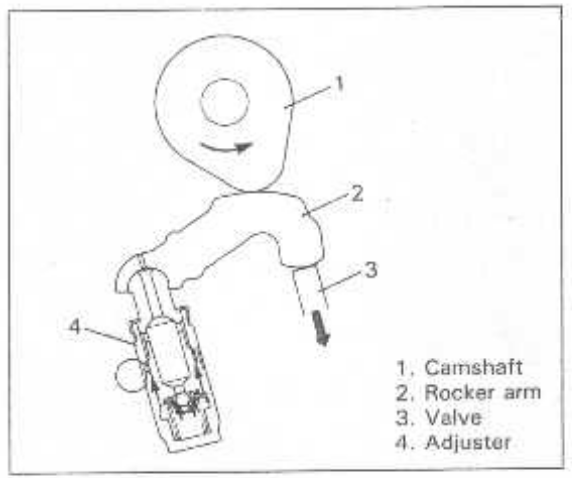Measuring the F6A rocker cam pad radius
Introduction
We introduced the F6a rockers in an earlier post. In this post we’ll measure some geometry on it.
Rocker Geometry
As discussed in the earlier post, the F6A camshafts act on the valves through rockers. These rockers have a radius that the cam profile acts against and a radius which acts against the valve. This is shown in the following figure:

In order to map the cam lobe profile and valve profile relationship the radius of the rocker must be determined. This will then allow mapping of the valve lift with respect to crank angle and the development of a cam profile for grinding.
Measurement setup
Below is the measurement setup. A stack of gage blocks is clamped in a small vise. This gage block stack is a close fit for the valve stem slot in the rocker. The small vise is contacting a 25-50-75 block. The rocker rests on the vise and is contacting the block. The vise and the block are contacting a machinist’s square. A dial indicator is kept in a fixed position contacting the cam pad of the rocker. The setup is spaced from the perpendicular side of the square with gage blocks.
The procedure
The gage block stack on the left was decreased in width and the setup was moved to keep everything in contact. The height gage was read and recorded for each step.
The results
The data can be fit to a circle, which shows the radius of the rocker pad to be 24 mm.
Conclusion
The rocker ratio for the Suzuki F6A is roughly 1:1 when the valve is closed and 2:1 when the valve is fully open. With the measurements provided in the factory service manual, the total valve lift is roughly eight millimeters. With the constraints of the geometry of the head, the ultimately achievable valve lift is roughly 10 mm.
Further work
I’ll be measuring the cam lobe profile soon. According to the manual the intake valve opens at 14 degrees before top-dead-center and closes 38 degrees after bottom-dead-center for a total of 232 degrees of duration and the exhaust cam opens 65 degrees before bottom-dead-center and closes 11 degrees after top-dead-center for 256 degrees of duration.